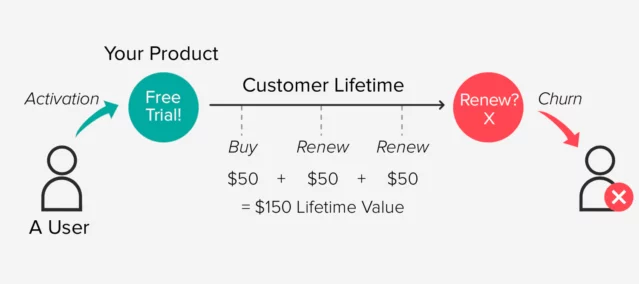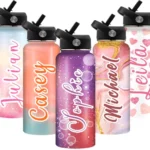Growth has proven to be too tedious a task for most Software as a Service (SaaS) companies, seeing how they tend to rely on future revenue.
Companies that operate under traditional business models tend to collect revenue at the time of purchase, which is not the case with SaaS companies. SaaS companies generate revenue via long-term subscriptions and repeat customers, both of which a reputable SaaS SEO agency can help ensure. In other words, retention is incredibly vital for SaaS companies to keep their head above the water and stay there.

That said, the introduction and implementation of the SaaS model is nothing short of a revolution, especially for Customer Relationship Management (CRM) software. If you are running a SaaS for CRM, you ought to find a software developer who can fix errors, improve its performance, and perform maintenance tasks.
SaaS Growth Metrics You should Consider
Churn
Churn makes it to the list as one of the primary growth metrics you need to consider. There are two types of churn, namely customer churn and revenue churn.
Customer churn is a measure of the number of customers who stop using your service every month. It is a percentage of your overall customer count.
Revenue churn is a measure of the revenue paid by the customers who stop using your service every month, as a percentage of overall revenue.

Customer and revenue churn make for excellent indicators of the health of your business, which is why you ought to take them seriously if you are an SaaS company.
While tracking your churn as a company in its infancy may not yield you significant results, bring your churn rate to a minimum becomes imperative as your company grows.
Cost of Acquiring
The Cost of Acquiring (CAC) a customer measures the amount you spend on sales, marketing, among other things, to gain a new customer.
To calculate this, consider the total amount you spend on sales and marketing throughout the month. This includes salaries and other expenses. Divide the total amount by the number of customers you have gained during the month.

The cost of acquiring customers is closely related to the Lifetime Value (LTV) you gain from each new customer. The profits you make from your customers must be higher than the costs to acquire them for a SaaS system to be successful.
Customer Lifetime Value
CTV represents the total revenue generated by a customer since the creation of their account. The longer your customers utilize your service, the more you can expect their CTV to be.
The CTV can tell you what your average customer is worth. If your company is new, the CTV can display your company’s value to your investors. The most basic formula to calculate the CLV is.
(Customer revenue x customer lifetime) – cost of acquisition and maintenance Leads by Lifecycle Stage.

In marketing terms, a lead is a prospect who is getting into research on your company. Classifying leads into subcategories can show you precisely where they are in the buying process.
Marketing qualified lead (MQL)
An MQL is a prospect who is researching your company further, examples of which are downloading ebooks and returning to your website.
Sales qualified lead (SQL)
An SQL is a prospect who has crossed the initial research phase, researching other vendors to compare them to your company. Such leads are worth a direct sales follow-up.
Lead-to-Customer Rate
The Lead-to-Customer rate shows precisely how well you are generating sales-ready-leads and your progress. It shows you how many of your leads turn into paying customers.
To calculate the Lead-to-customer rate, compute the total number of customers in a given month, divide it by the total number of leads, and multiply the result by 100. Here is the formula to calculate the lead-to-customer rate.
Lead-to-Customer Conversion Rate = (Number of qualified leads that resulted in sales/Total number of qualified leads) x 100.
Expansion revenue
Focus on expansion revenue to combat the effects of churn. Expansion revenue covers increases in the monthly recurring revenue (MRR) when one of the current customers upgrades to a costlier plan.
An adequate expansion revenue can reduce your churn rate to negatives. Negative churn is said to occur when your expansion revenue exceeds the value you are losing every month due to revenue churn.
Higher expansion revenue is known to be easy to achieve. It is much easier, cheaper, and more effective to upsell customers to better versions of your product than it is to gain new leads and turn them into returning customers regularly.
Monthly Recurring Revenue
MRR is, by far, one of the most critical of the key SaaS metrics. When you gain a new customer, you will get recurring revenue, which means that you do not have to worry about making one-off sales every month.
MRR is primarily a measure of the recurring revenue of your subscription business. It usually excludes one-time and variable fees. However, month-to-month businesses may include them.
Customer Engagement Score
A customer engagement score gives you a glimpse of how engaged a customer is. This is usually indicated by how often they’re logging in and for what they are using your software. Every company’s customer engagement score scale is different. This depends on how their customers use their software.
If you want to create your own customer engagement score, you can draw up a list of metrics that gauge your customer’s satisfaction with your product. Examples of ways to assess their happiness and satisfaction are checking if they log in every day and reach certain usage milestones with a specified period.
Join 25,000+ smart readers—don’t miss out!







